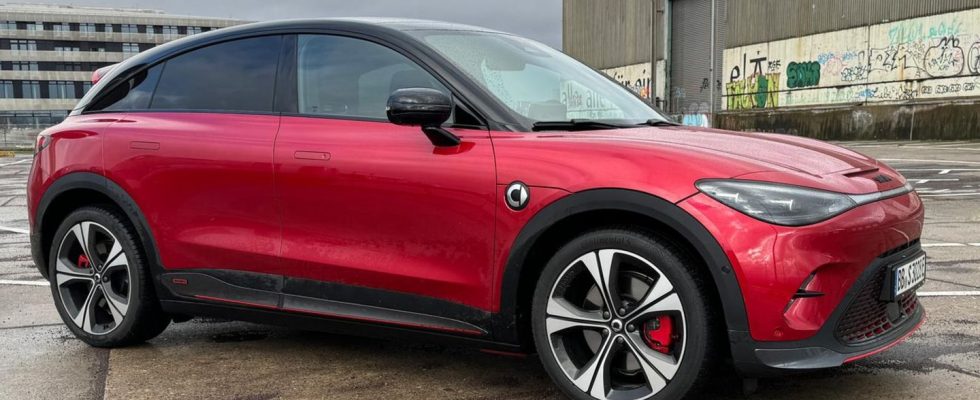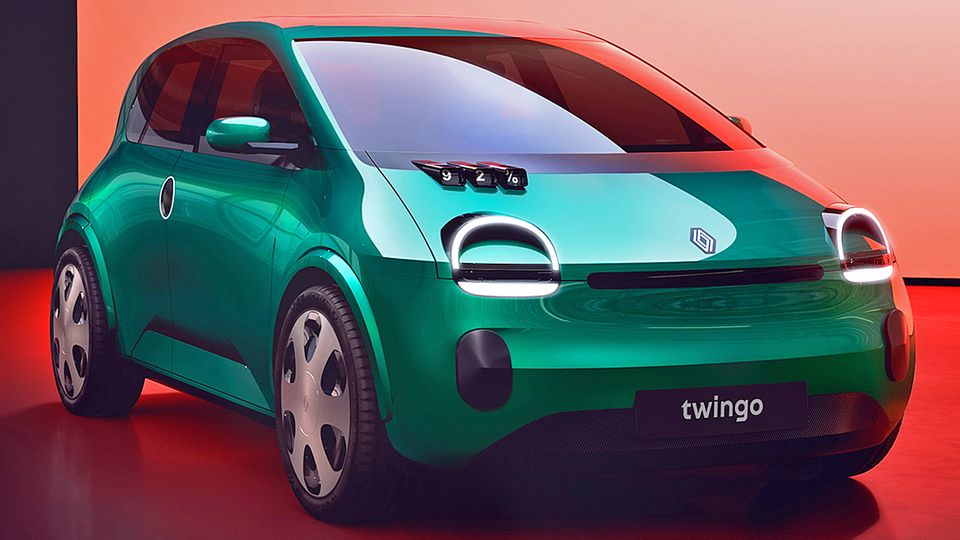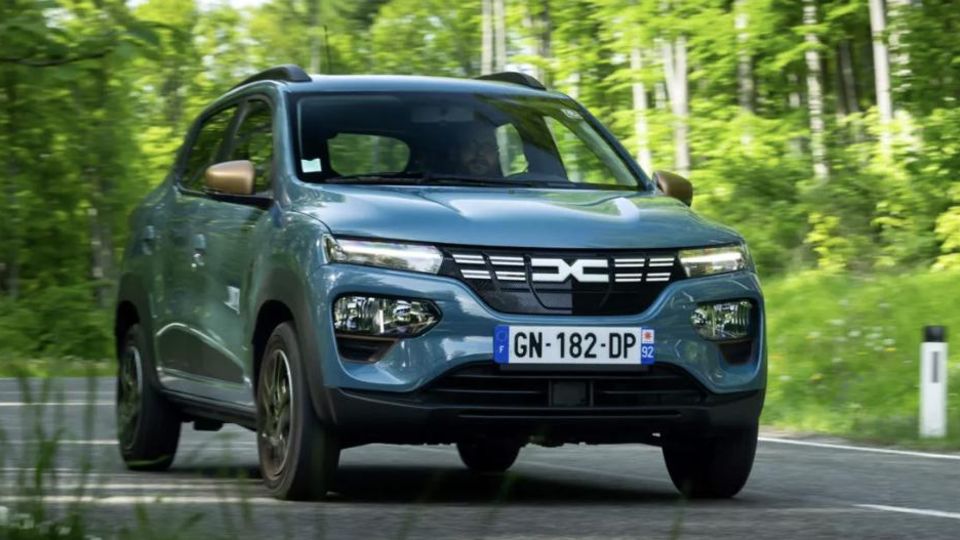428 hp, over four meters long, extremely well equipped for long journeys: The Smart #3 is a thoroughly grown-up car – but especially in the Brabus edition it’s more for big budgets. Is it worth buying?
Anyone who drives a Smart #3 has to accept that the car’s own brand will not be believed. The image of what a Smart should be has been burned so deeply into people’s minds that it seems impossible to accept the brand’s new models as Smart.
Admittedly, the vehicles resulting from the merger of Daimler and the Chinese car manufacturer Geely differ significantly from the company’s previous direction. Instead of tiny small cars, funny vehicle towers and first steps with purely electric models, there are full-fledged electric vehicles with the #1 and #3 (somewhat awkwardly actually pronounced “Hashtag 3”) that can easily keep up with the big ones.
After the brand made a new name for itself with the compact SUV #1, now follows #3. It is rumored that the name #2 had to remain free because – as soon as technology allows – a real successor to the popular Fortwo small car is to follow.
Electric car
Smart #3 Brabus in pictures
The #3 is an SUV coupe that was presented at the end of 2022, was initially available for purchase in China and is now also available on the European market. The car is available in several versions, the spearhead being the Brabus model, named after the Bottrop vehicle refiner. Like all other Smarts, this is also produced in China, but it has a sportier look, significantly more power and a little more equipment.
Of course, that has its price: the #3 Brabus edition currently costs 50,990 euros. The basic model is available from just 38,490 euros. However, the surcharge also comes with a lot: Brabus buyers can expect more charging power, a larger battery, all-wheel drive, improved aerodynamics, larger rims, tinted windows, an adaptive high beam assistant, running light indicators, and a head-up display Beats sound system, a heat pump and 150 hp additional performance.
With a lead base it quickly empties and quickly fills up again at all charging stations
The performance is actually amazing. The 428 hp are more than sufficient and are brought onto the road as quickly as possible by the all-wheel drive. If you press hard, the Smart #3 Brabus speeds from a standstill to 100 km/h in under 4 seconds. Overtaking is of course no problem at all. But only up to a certain speed. Because even if the Brabus logo speaks a different language, the Smart #3 is built more for leisurely cruising.
Because the top speed is reached at 185 km/h – and that only if you step on the pedal yourself. The two highway assistants get out earlier. The “smart Pilot Assist” mode with steering assistance only wants to help up to 130 km/h, the adaptive cruise control with distance control stops at 150 km/h. Driving really fast with the Smart #3 Brabus is not desirable. There may be at least three reasons for this: firstly, the car becomes quite loud from 160 km/h and secondly, driving fast increases consumption to wasteful heights. And lastly: Where else, apart from a few sections of motorway, do you need such high speeds?
Speaking of consumption: it varies – big surprise – very much. If you drive the Smart #3 carefully, the vehicle will drive less than 20 kilowatt hours per 100 kilometers in Eco mode with a moderate interior temperature and an outside temperature of around 10 degrees Celsius. Even then, getting to the 415 kilometers specified by the manufacturer according to the WLTP standard with the 66 kilowatt hours of the battery would be a very ambitious project. In reality it was around 360 in the test.
If you push through on the highway and start like a rocket at every traffic light, consumption can be increased to almost 30 kilowatt hours. In the test it was 28 kWh/100km. After just over 230 kilometers it was over.
But no matter whether you are a lead-footed rider or a relaxed cruiser: the Smart #3 drives extremely safely and confidently in every situation, sits comfortably on the road and conveys a high feeling of security. For very relaxed drivers, there is also an e-pedal mode that further increases recuperation and theoretically allows driving with just one pedal.
Important: This actually doesn’t work without a brake. The recuperation is not enough to bring the car to a standstill in a timely manner and in the test there were one or two collision warnings that prompted you to hit the brakes. It is not known whether the accident would not have occurred even without intervention – there was no courage to try it out. In short: a pure one-pedal mode looks different. The Smart #3 can’t do that perfectly, if it even wants to.
What you can always rely on is that the battery regains its strength very quickly after the journey. The Smart #3 charges with up to 149.7 kilowatts and in the test managed to go from exactly 10 percent to exactly 80 in 28 minutes and 40 seconds. This is exemplary and suitable for everyday use. Equally pleasing: With the exception of the cheapest basic model, all Smart 3 versions charge at 22 kilowatts using an AC connection, which is very noticeable when waiting times at the often cheaper charging stations.
Technology is making progress
Charging stations of the future: The waiting time with an electric car should finally be shorter
Small drawback: The charging plug on the driver’s side was a frequent nuisance in the test, as charging on the street in the correct direction of travel means that you are standing on the street. Not a nice feeling in busy places, especially since there is always the fear that someone could drive off the charging cable that is sticking out onto the road.
The Smart #3 is quite spacious despite its sporty design. There is enough space for all passengers at the front and back, and the trunk has a capacity of 370 liters. If you fold down the back seat, it’s 1160 liters. This is easily sufficient for most transports.
The interior of the Brabus is beautifully decorated and decorated, and the choice of materials is predominantly high quality. Only with the gray hard plastic of the center console less would definitely have been more. It seems a bit too full and, despite the high-quality – i.e. creaking-free – workmanship, a bit cheap. There is enough storage space. Due to the low roof, depending on the seating position, it can happen that the technology on the rear-view mirror obstructs the view of a traffic light on the left side of the road. You can be prepared for that, but the lush component was noticed several times in the test.
The software must – and will – learn
The software is noticeably under construction. Here and there you discover even smaller inadequacies, such as the rather inadequate charging planning for long distances across national borders or the lack of preconditioning of the battery before charging stops in the test. But it’s hardly worth writing about it in detail: Smart installed an update during the test period, and further updates with some very extensive changes are in the starting blocks. With such vehicles, a software test is always just a snapshot that can turn out completely different tomorrow.
What is more important is the solid basis: the hardware reacts quickly, the display is very easy to read and the connection of smartphones, whether Android or iOS, is already taken care of. Android Auto and Apple Car Play are available in their wireless versions; the smartphones are charged via a sufficiently sized charging bay in the center console. There are also USB-C ports.
The sound system in the Brabus is from Beats and has 13 speakers – if you turn it up, it comes into its own. Entertainment is provided in the car.
Parking and maneuvering is no problem with the Smart thanks to numerous cameras. The large display offers a 360-degree view and many sensors that make maneuvering the car easier. This also includes certain moments while driving, such as turning right in a bicycle lane. Thanks to blind spot warning and cameras, you can see very quickly whether you have a clear path.
Speaking of assistants: They can currently be quite annoying in the Smart #3. Like any other new car, the Smart is annoying at every little thing. Five kilometers per hour too fast? The car warns: “You are exceeding the speed limit”. Gladly several times. Don’t take your eyes off the road for a moment? This makes a beep. Do you look tired but aren’t? Whatever, beep. Much of it, but unfortunately not all of it, can be switched off permanently. A small, disturbing residue remains. And then there is the really bad turn signal sound. Wish for the software department: Please create alternatives, because turning with the Smart #3 is an acoustic imposition.
But the car – or the manufacturer – cannot be responsible for all the warnings. Here only a very patronizing law is followed. New cars have to do that. Behind the scenes it is rumored that small workarounds are being worked on to give the driver the opportunity to reduce the annoyance to a minimum in accordance with the law. Please fast!
Electric car conclusion: Smart #3 Brabus
As I said – you shouldn’t compare this car with a Smart Fortwo. If you use the small city bowl as a benchmark, the #3 is actually “no longer Smart”. This car is grown-up through and through, offers a lot of comfort and plenty of performance. All of this is packed into a really nice car, which looks much sportier than the #1, especially due to the slightly lower height and the sloping rear.
The Brabus model also offers endless performance, even if this is not reflected in the top speed. Acceleration is a celebration. In everyday life, the car can be moved wonderfully thanks to the comfortable seats and the many amenities, but if you want to achieve long ranges, you should refrain from constantly pressing the pedal.
When it comes to the usual key figures, the Smart #3 actually leaves nothing to be desired. If the car is worth the price of 51,000 euros, you should try to take it for a test drive. The car is a serious alternative in its vehicle class.




